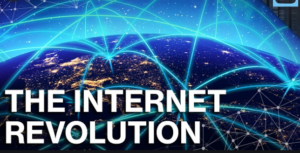5G is a term that we have been hearing for some time, but the truth is that it is increasingly present in any environment that has to do with technology. We already hear a lot about mobile phones with 5G and the advantages of this new generation of technology, which causes many doubts to be sown among all those who still do not know very well what it is and what its arrival will entail. Next, we are going to show what 5G is, advantages over 4G, and implementation deadlines in our country.
In the last Mobile World Congress (MWC2019) 5G has once again been one of the protagonists, even in this edition we have been able to see some commercial devices prepared to operate with the new networks. However, it is not yet possible to take full advantage of these devices, since the deployment of 5G will still take time to reach our country.
What is 5G
5G is basically an acronym to refer to the fifth-generation mobile network. A new generation of standard wireless communication technologies, which is what our mobile devices use to allow us to be connected anywhere and which is the evolution of the current 4G / LTE.
A generational leap with which improvement is expected in terms of speed, latency, and consumption that, according to what we are seeing, could completely change the use of our mobile phones or connected devices. In short, 5G is the new generation of technology used in communication between mobile devices that will offer us a higher connection speed with much lower latency and that will still guarantee lower energy consumption, which will help to extend autonomy. batteries.
The 5G improves Internet technology in the mobile in all its aspects such as bandwidth, latency, or capacity of connected devices. From this, we have a technology that promises:
- Very high speed and capacity mobile broadband, with mobile speeds of over 100 Mbit / s and peaks of 1 Gbit / s.
- Ultra-reliable and low-latency communications, around 1 millisecond or more compared to 20-30 ms typical of 4G networks.
- Massive machine-to-machine (M2M) communications, including the Internet of Things (Up to 100 more connected devices per unit area (compared to 4G LTE networks).
99.999% availability - 100% coverage
- 90% reduction in grid energy consumption
Advantages of 5G
The main advantages of 5G are mainly focused on increasing speed and reducing latency, however, they are not the only advantages that this type of fifth-generation networks will offer.
Another advantage is that it will reduce energy consumption by 90%, which suggests that the batteries in our devices will achieve greater autonomy with the same capacity. The availability of this type of network will be 99.9999%, the coverage 100%, and the battery life in IoT devices is expected to reach up to 10 years.
But the thing does not stop there, and that is that 5G will also allow having more connected devices. Specifically, up to 100 devices at a time per cell or node in a square meter. Something that will undoubtedly make it possible for any device to be connected, not only mobiles but also household appliances, robots, cars, etc. 5G will also offer network coverage that will be very close to 100%.
5G: Speed and latency
As we have already commented, one of the main advantages of the current generation is speed. Specifically, with this fifth generation of technology used for communication between mobile devices, the data rate is expected to be 10 to 100 times better than current 4G, 4g +, or LTE networks.
The maximum speed that 5G will be able to offer us would be around 10Gbps (even with higher peaks), which to get an idea, would be higher than the speeds that fiber optics offers us today. Therefore, data transfer on a mobile connected to a fifth-generation network would be much faster than what we are used to today.
But without a doubt, perhaps the most important thing is the reduction of latency, understanding as latency the time it takes to transfer a data packet on the network. Currently, we could talk about latencies of 100 milliseconds in 4G networks and 20 milliseconds in 4G +, however, latency in 5G networks is expected to decrease to between 1 and 4 milliseconds.



